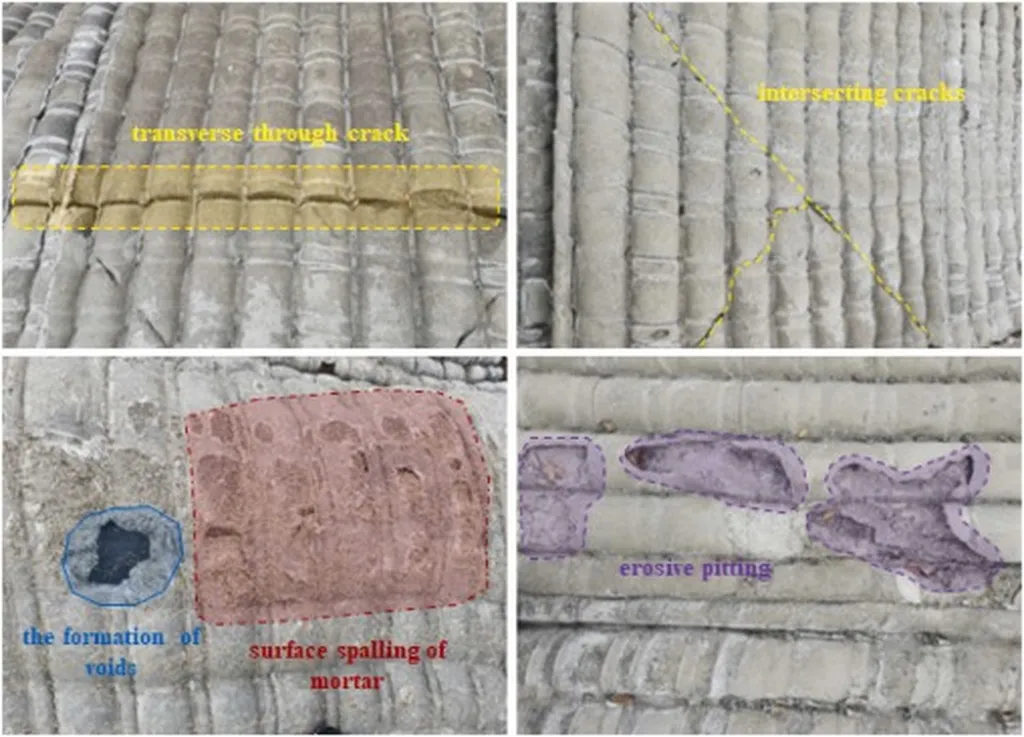In the relentless dance between nature and engineering, concrete structures stand as silent sentinels, enduring the ceaseless assault of the marine environment. Yet, the very water that surrounds them may be accelerating their deterioration, according to groundbreaking research led by Shuhuan Zhou of the Key Laboratory of Geological Hazards on Three Gorges Reservoir Area and China Three Gorges University. The study, published in *Case Studies in Construction Materials* (translated as “典型建筑材料研究案例”), sheds light on the often-overlooked role of water pressure in chloride ion erosion, a critical factor for the energy sector’s offshore and coastal infrastructure.
Zhou and his team designed long-term seawater immersion tests, comparing the effects of water pressure on chloride ion transport in concrete. Their findings are striking: water pressure significantly increases the rate of chloride ion erosion, with erosion depth increasing by up to 50% in some cases. “The effect is particularly pronounced during the early stages of immersion,” Zhou notes, highlighting the critical initial period for concrete structures in marine environments.
The research reveals a three-stage process of microstructure deterioration under water pressure. Initially, water pressure promotes the formation of expansive products like gypsum and ettringite, reducing porosity. As immersion time increases, water pressure enhances the transport of aggressive ions, accelerating the formation of expansive products in pores and inducing microcracks in stress concentration areas. Finally, after long-term immersion, the internal pore size of the concrete stabilizes.
The commercial implications for the energy sector are substantial. Offshore wind farms, oil and gas platforms, and coastal power plants all rely on concrete structures that must withstand the harsh marine environment. Understanding and mitigating the accelerating effect of water pressure on chloride ion erosion can extend the lifespan of these structures, reducing maintenance costs and enhancing safety.
Based on Fick’s second law, Zhou’s team developed a chloride ion transport model incorporating the influence of water pressure. Numerical simulations validated the model, providing a theoretical basis for analyzing chloride ion migration in concrete exposed to water pressure environments. This model could revolutionize the design and maintenance of marine concrete structures, ensuring their longevity and reliability.
As the energy sector continues to expand into offshore and coastal areas, the need for durable, long-lasting infrastructure becomes ever more pressing. Zhou’s research offers a crucial step forward, providing a deeper understanding of the complex interplay between water pressure and chloride ion erosion. By incorporating these findings into future designs, the energy sector can build more resilient structures, securing its place in the marine environment for decades to come.
In the words of Zhou, “This research provides a theoretical basis for analyzing the chloride ion migration mechanism in concrete exposed to water pressure environments, which is crucial for the energy sector’s offshore and coastal infrastructure.” As the industry grapples with the challenges of marine environments, this research offers a beacon of insight, guiding the way towards more durable and reliable concrete structures.

